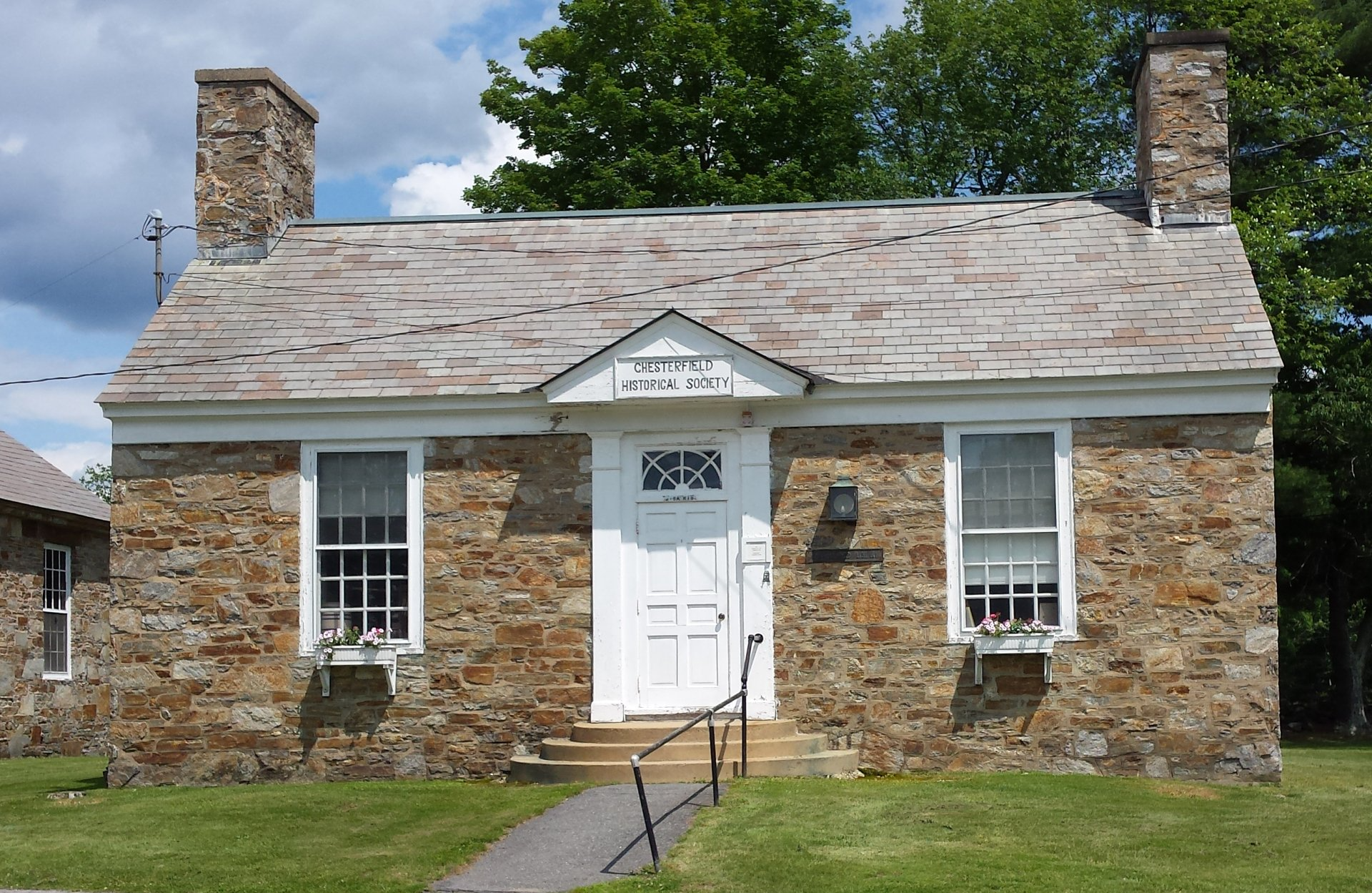Chief Justice Harlan F. Stone
October 11, 1872 – April 22, 1946
C-SPAN did a profile on Chief Justice Stone. That video and a newspaper article about his
contribution to Social Security appears at the end of this page.
Born in Chesterfield on October 11, 1872, Harlan Stone’s family moved to western Massachusetts early in his life. He attended Amherst High School and Amherst College graduating Phi Beta Kappa in 1894. He went on to Columbia Law School graduating in 1898 and passing the New York Bar in 1899. He divided his time between practicing law and teaching at Columbia Law School, where he became Dean (1910 – 1923). During WWI, he worked with the War Department Bar of Inquiry reviewing applicants with conscientious objector status, a subject for which he expressed very little sympathy. He resigned his position at Columbia Law School over philosophical conflicts with the school’s President in 1923.
In 1924, President Coolidge, one of Stone's Amherst College classmates, appointed him US Attorney General to replace his besmirched, scandal ridden predecessor. Coolidge felt he was beyond reproach and Stone proved him right. He immediately replaced all his predecessor’s appointees, and appointed Hoover to oversee the Department of Justice Bureau of Investigation ordering him to revamp it after Scotland Yard. The newly modeled and more efficient agency became the FBI. A hands-on Attorney General, he argued many cases personally, including an anti-trust suit against the Aluminum Company of America, which was owned by the family of the Coolidge’s US Secretary of Treasury.
In 1925, Coolidge nominated Stone for Associate Justice of the Supreme Court. When some senators expressed fear that Stone might be too protective of business interests because of his contacts on Wall Street, Stone volunteered to answer questions before the Senate Judiciary Committee. His appearance before the committee, unprecedented at the time, set the model for future confirmation hearings for federal court appointments. He was confirmed by the Senate by a 71-6 vote.
Much to the surprise of his distracters, Stone took the more liberal view of government regulations. During the 1932 – 1937 Supreme Court terms the New Deal was repeatedly struck down. Justices Stone, Holmes and Brandeis formed the minority upholding legislation that regulated industry or attempted to improve the working conditions. For supporting the New Deal, President Roosevelt nominated him for Chief Justice in 1941, a position he held for the rest of his life. This was one of only two times a justice was appointed by a president of the opposing party. Also, Stone was the first Chief Justice not to have held elected office.
During a Supreme Court open session, Chief Justice Stone suddenly became ill. He died of a cerebral hemorrhage at his Washington D.C. home on April 22, 1946 after only serving five years in office. He is buried in Rock Creek Cemetery in the Petworth neighborhood of Washington D.C.
Although Chief Justice Stone moved away from Chesterfield at an early age, his roots lie deep in its soil. He is a descendant of the Stone family who purchased a Chesterfield tract as early as 1771. He returned often to his place of birth to see relatives and eventually in 1899, married a local girl, Agnes E. Harvey. Her family had settled in Chesterfield in 1772. So although Chief Justice Stone didn’t live in Chesterfield for long, his spirit never left. As proof he once wrote:
"Just to prove that I am a New Englander, I might mention that I am the ninth generation of direct descendants of Simon Stone, who settle in the Massachusetts Bay Colony in 1635. Five generations, of which I am the last, lived in the little town of Chesterfield, New Hampshire, where I was born; and so far as i know, I am the first American member of the family to leave New England and the first lawyer in the whole lot."
H. Stone's contribution to the formation of Social Security
The Brattleboro Historical Society submitted this article to the Brattleboro Reformer. Published on
June 5, 2020. It mentions how local people, including H. Stone contributed to the formation
of Social Security.
Chief Justice Harlan Stone Profile
On the 50th Anniversary of his death, C-SPAN profiled the life and career of Chief Justice Harlan Fiske Stone, who served on the Court from 1925 to 1946, the last five as Chief Justice. He was the only Supreme Court Justice to occupy all seats on the Court during his term. Family members, a former clerk, and a legal scholar talked about his personal life, his life on the Court, and his influence on the judicial system. The video is 56 minutes long: https://www.c-span.org/video/?71462-1/chief-justice-harlan-stone-profile



